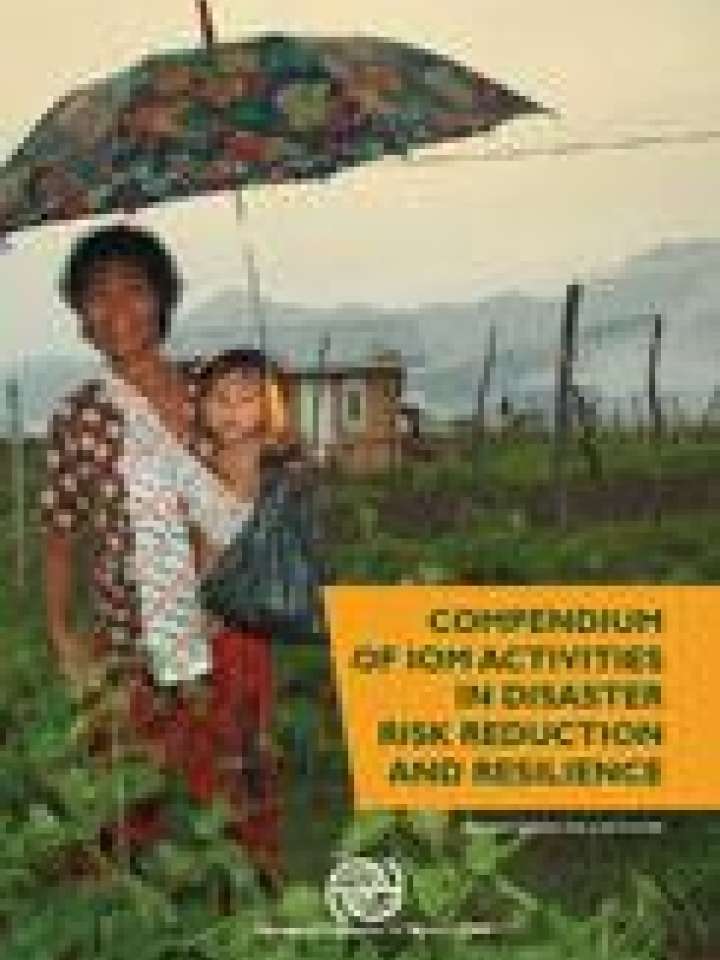Compendium of IOM activities on disaster risk reduction and resilience
This compendium presents the state-of-the-art approach to mobility and disaster to practitioners and policy-makers in the risk reduction and migration community. The analysis is based on IOM’s extensive achievements in the field: 257 disaster-related projects in 31 countries from early 2009 to early 2013 for a total over USD 720 million, supporting at least 23 million individuals exposed to, or affected by, natural hazards.
The compendium demonstrates how moving influences the vulnerability and resilience of people and communities, and provides innovative solutions to comprehensively address challenges related to disaster risk and mobility.
Part I addresses: (i) crises, resilience and sustainable development seen through the prism of mobility includes: key concepts and definitions in disaster risk management; impact of environmental change on the drivers of mobility; Definitions: DRM, DRR and CCA; (ii) a vulnerability approach to the migration-environment nexus: “environmental migrants”: The IOM working definition; (iii) the livelihood approach to resilience from a migration perspective 18 trapped populations; (iv) key policy messages on migration and disasters: migration crises and global policy forums: the IOM comprehensive policy agenda.
Part II addresses: IOM’s Intervention to reduce risk and build resilience; DRR in IOM’s migration crisis operational framework; IOM’s involvement in risk reduction and resilience building activities; IOM’s programmes focusing on disaster risk reduction and preparedness; preventing forced migration and promoting migration as a strategy to build resilience; preparing communities for potential displacement; managing disaster risk through mobility and managing mobility induced by disasters; mitigating the impacts of displacement; building resilience through durable solutions to displacement; reducing risk and building resilience across the migration crisis phases.
Explore further
